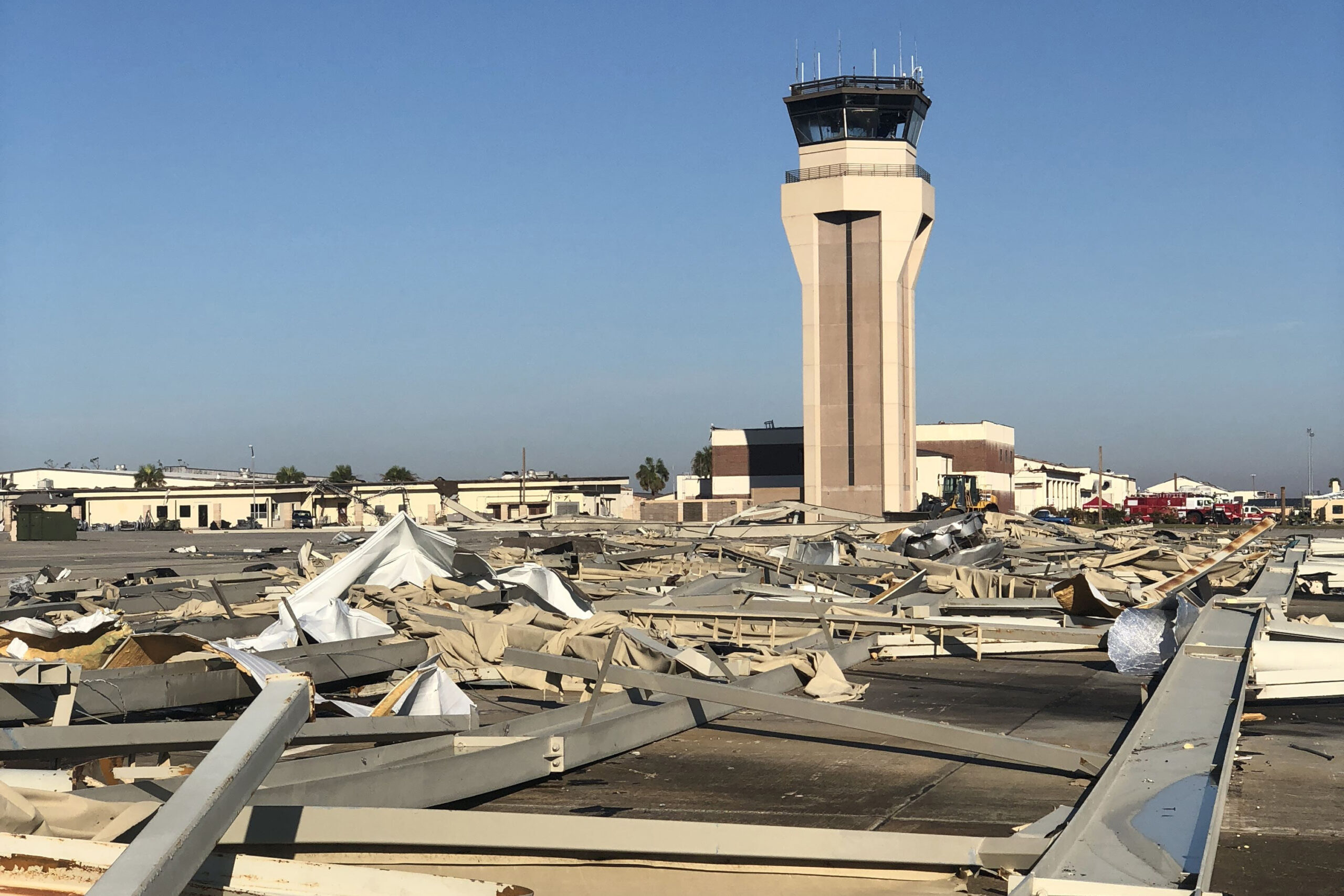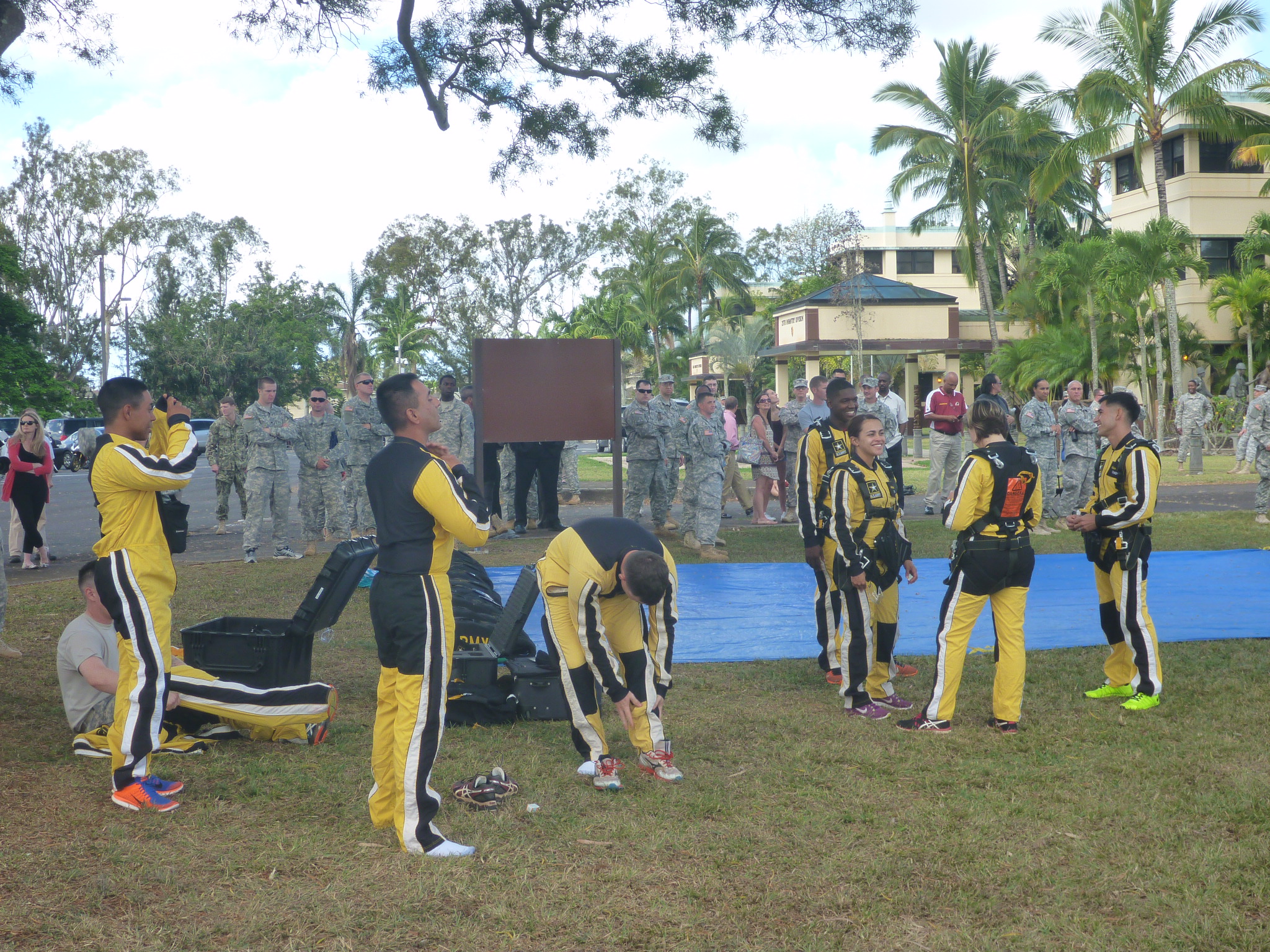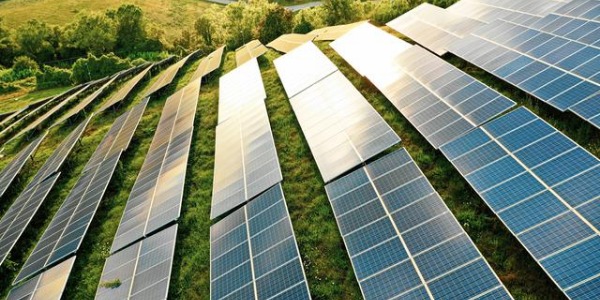
In 2018, Tyndall Air Force Base in Florida, home to two F-22 squadrons, was destroyed by Hurricane Michael and is being rebuilt at a cost of at least $4 billion.
If one subject is pushing the Defense Department (DoD) to evolve its Concept of Operations to the same or greater extent than the Great Power competition and all-domain operations, it’s how climate change and energy considerations are already affecting military operations and readiness. Consider these climate-related occurrences in just the last few years alone.
Earlier this year, Texas’ power grids failed after severe winter storms caused statewide power outages and food/water shortages that hampered or shut down the state’s 15 active military installations such as Lackland Air Force Base in San Antonio.
In 2018, a vital Air Force base that was home to two squadrons of F-22 Raptors, Tyndall Air Force Base in Florida, was destroyed by Hurricane Michael. It’s being rebuilt at a cost expected to exceed $4 billion. Also in 2018, much of the Camp Lejeune and Marine Corps Air Station New River in North Carolina were leveled by Hurricane Florence, with repairs to the Marine Corps facilities estimated to cost $3.6 billion.
At the same time, global warming and Arctic ice melting has opened up new areas of potential military conflict. For example, Arctic ice melting along the Northern Sea Route, normally only traversable a few months a year with the help of icebreakers, has made the shipping channel accessible to not only tankers but also Russian naval vessels and troops. Canada, Denmark, Iceland, Norway, Russia, and the U.S. all have claims to the Arctic and its minerals and are warily eyeing Russia’s activities.
In a March 2021 “Message to the Force”, Secretary of Defense Lloyd Austin said that tackling climate change was one of five imperatives necessary to defend the nation (the others being defeating COVID-19, prioritizing China as the pacing challenge, addressing advanced and persistent threats, and innovating and modernizing the Defense Department).
“We face a growing climate crisis that is impacting our missions, plans, and capabilities and must be met by ambitious, immediate action,” he wrote. “In line with the President’s direction, we will elevate climate as a national security priority, integrating climate considerations into the Department’s policies, strategies, and partner engagements. “We will incorporate climate risk assessments into our war-gaming, modeling, and simulation, and we will bolster mission resilience and deploy solutions that optimize capability and reduce our own carbon footprint. Where possible, we will seek to lead the way for alternative climate-considered approaches for the country.”
In just the last two months, the DoD has also released its DoD Climate Adaptation Plan that provides a climate adaptation strategic framework with lines of effort, enablers, and strategic outcomes, as well as its DoD Climate Risk Analysis that provides a framework to incorporate climate risk into the full lifecycle of DoD strategic documents, programs, and partner engagements.
These are laudable strategies and major steps forward. Now, DoD policy makers and leaders must quickly improve their climate literacy to adapt the frameworks, develop strategies, and execute plans in their areas of responsibility.
DoD Installation Efforts for Energy Resiliency
The DoD has championed a number of projects resulting in success stories that demonstrate its commitment and ability to address climate change and energy issues. Two case studies show the Defense Department’s willingness to innovate and evolve:
- In March 2021, Marine Corps Air Station Miramar in San Diego completed a microgrid installation. The microgrid lets operators manage the power load and everything plugged into the grid while redirecting power to parts of the base that need it most. The system incorporates a combination of renewable and conventional energy sources, including photovoltaic and solar thermal energy, natural gas and diesel, and battery storage to fully power MCAS Miramar for up to 21 days in the event of an emergency or a blackout.
- In July 2021, an energy resilience evaluation at U.S. Army Garrison Hawaii demonstrated that Schofield Barracks, Wheeler Army Airfield, and Field Station Kunia could be disconnected from the Hawaiian Electric Company main power Grid and within an hour establish a microgrid to restore power across the Army service area.
One of the keys to realizing the DoD’s goal for resilience in the face of evolving environmental characteristics is partnerships with private-sector organizations like Hawaiian Electric.
“We need more of that, and one of the best ways to get there is to build partnerships and collaborate,” Joe Bryan, senior climate advisor to the secretary of defense, speaking about those examples. “Success in transforming the energy sector depends on collaboration across the government and with the private sector.”

Army Garrison Hawaii demonstrated a microgrid at Schofield Barracks, Wheeler Army Airfield, and Field Station Kunia. Shown is the Army Golden Knights parachute team preparing for a jump at Schofield Barracks. Photo courtesy of Barry Rosenberg.
Possible Options For Installation Resiliency
The need to harden installation infrastructure with new energy sources such as microgrids and battery storage is not a sentiment lost on either the DoD or industry.

Jan Vrins, partner and segment leader for Guidehouse’s Energy, Sustainability, and Infrastructure segment.
“This topic is not new; the Department of Defense has been looking at how weather events have impacted their bases around the world for many years,” said Jan Vrins, partner and segment leader for Guidehouse’s Energy, Sustainability, and Infrastructure (ES&I) segment. Guidehouse is a Veritas Capital portfolio company with more than 700 consultants in the ES&I segment alone.
“But here’s what’s different. NOAA’s National Hurricane Center has been tracking these weather events since 1980. On average we’ve had seven hurricanes a year. From 2015 to 2020, however, that number has more than doubled to 15. Our vision is that not only will these events occur more often, they will be larger in terms of impact—impact to infrastructure, to cities, to communities, and to the Department of Defense’s bases and operations.”
So what’s to be done? Guidehouse has some suggestions.
First, the DoD should assess not only events that are impacting the installations now, but also at how they need to plan, build, and incorporate new energy systems into recapitalization processes and investments that “bake” resilience into future facilities, platforms, systems, and instantiations going forward.
For new, ground-up reconstruction projects like Tyndall AFB and Camp Lejeune, the need is to incorporate technologies and building standards for the energy system that will minimize or eliminate risks inherent in the future events.

Hector Artze, an ES&I partner at Guidehouse.
“You’re not always going to have an opportunity to start from scratch, or new, on every installation,” observed Hector Artze, an ES&I partner at Guidehouse. “But understanding the vulnerabilities of the existing systems, and planning for resilience as you continue to operate and recapitalize those systems is critically important.”
Migrating the non-tactical-vehicle fleets to zero-emission vehicles can also play an important part in resilience, as well as reduced operating and sustainment costs, while helping achieve net-zero carbon emission goals. That said, large fleets of such vehicles will need to be supported by local and base electrical grids that at the moment do not necessarily have sufficient power-generating capacity. The cost to upgrade grids to support multitudes of electric vehicles, as well as the proper mix of hybrid and fossil-fuel vehicles, should be part of the operational discussion.
Regarding the vulnerability of military installations, military planners should be incorporating mobility around their bases and operations so assets can be quickly moved in or out of harm’s way.
Survivability movements are critical, anticipatory actions on the battlefield that combat maneuver units execute with precision during training exercises and real-world missions to avoid detection or to side-step sustained attacks by the enemy.
Increasingly unpredictable extreme weather events will require that combat units conduct climate-event-driven survivability movements on installation to avoid loss of combat power. This needs to be incorporated into military training doctrine. Understanding weather and the timing of an operation isn’t really taken into consideration when planning for an operation, not until it executes. If an environmental impact is to occur during an operation and it requires additional resources to handle, military planners need to know what the additional lift requirement should look like and the impact on the flow of forces and sustainment.
As the multi-domain operations (MDO) concept matures, the necessity to rapidly move combat power out of the way of catastrophic climate events becomes an essential element of installation contingency planning and combat readiness. Thorough mission analysis and risk assessment(s), reinforced by sophisticated modeling and simulation scenarios, should be incorporated into military planning at all echelons.
Said Vrins, “On top of, obviously, things like microgrids and energy storage, I think that mobile assets that can be moved around become important elements of resiliency,” said Vrins. “In the case of a flood or hurricane, the services fly fixed and rotary wing assets away from the bases. But now imagine that you have the ability to actually pick up parts of the base and move them out of harm’s way. In addition to adaptation, that’s the sort of capability that will be needed as weather events have greater impacts across the country.”
Conclusion
The prospect of an unstable, unreliable energy supply is a threat to the DoD that presents a host of risks and challenges that could degrade installations and infrastructure while costing the department billions of dollars in damages.
As extreme weather events increase in their severity and frequency, the operational demands on U.S. forces will surge while amplifying the need for modifications to—and investment in—resilient infrastructure, installations, and equipment.
The DoD needs installations that are more resilient than ever before. Whether it is sophisticated cyberattacks from near-peer competitors, aging infrastructure, global pandemics, or climate change, the DoD needs to develop modern, resilient, sustainable installations that can sustain strategic readiness in a contested Multi-Domain Operations battlespace.
At the same time, the DoD—as one of the world’s largest owners of energy assets, vehicle and ship fleets, and military installations—has an opportunity to take a leadership role in transitioning the U.S. to a more efficient, climate-friendly, and resilient infrastructure. Political winds are constantly shifting, however, we should strike a balance, where possible, on being able to respond rapidly and lethally against an adversary and the need to be eco friendly.
“The Department of Defense has energy, buildings, and transportation at a tremendous scale,” said Vrins. “In discussions with DoD senior leaders we’ve suggested that they can be taking a leadership role in climate change and a leadership role in collaborating with the commercial partners and local governments that they work with to come up with not only resilient solutions but also technologies at scale needed to decarbonize basically the entire economy.”
























